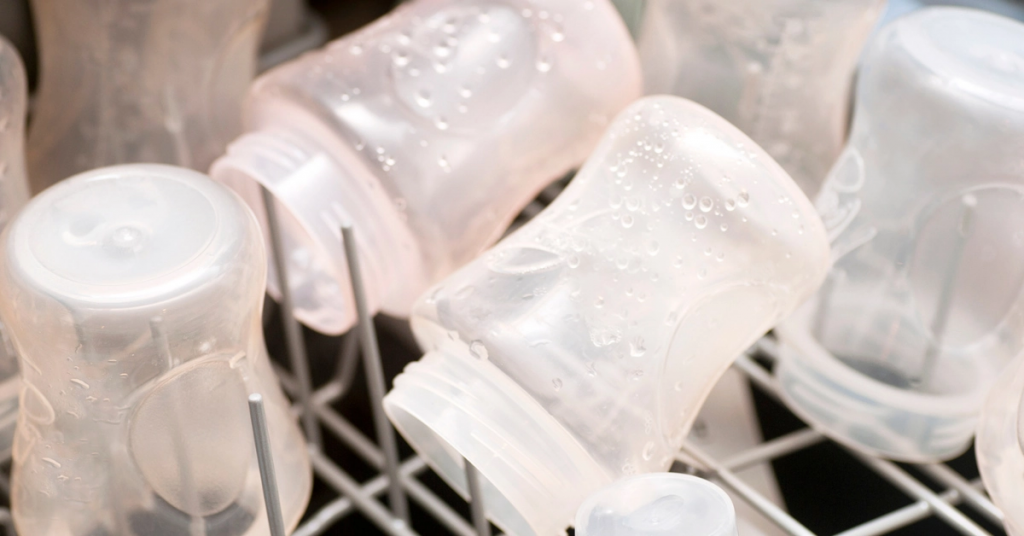Learn whether or not swaddling can help relieve gas and pain and discomfort in newborn babies.
The products mentioned on this page were independently selected by Babycious editors. As an Amazon Associate, Babycious may earn a commission from qualifying purchases.

Photo by Laura Garcia
Your newborn baby is a tiny human that has yet to figure out the most basic bodily functions – like burping and passing gas. Gas pain or discomfort is a common issue for newborns, but it can be distressing for both baby and parents. As you search for ways to help your baby find relief, you may come across swaddling as a potential solution. So does swaddling really help with gas?
Swaddling makes no difference for gassy babies because the swaddle blanket doesn’t put much pressure on your baby’s belly if any, and your baby’s legs should still be able to move a little when swaddling is done correctly. However, swaddling generally improves your baby’s quality of sleep and can help minimize night wakings that are not related to tummy or gas pains.
Something to keep in mind is that just about every baby goes through gas issues in the early weeks of life. If your baby is only making grunting noises while sleeping through and not actually crying, then there is no need to intervene. Most newborn babies are noisy sleepers and this is completely normal.
Tummy and gas problems peak around 10 to 14 weeks old, and then start to improve as your baby’s digestive system develops and matures.
Make Sure You’re Swaddling Correctly
Swaddling should have no negative impact on your baby’s gas issues. If your baby is fighting the swaddle when gassy, the swaddle may be putting some pressure on their tummy, making them uncomfortable. So what do we mean by swaddling correctly?
The most important thing to keep in mind when swaddling your baby is that their hips should be able to move a little. You don’t want them to feel like they’re in a straight jacket. Their legs should have enough room inside the swaddle to move and kick around freely so that they can help themselves pass gas more easily.
If your baby is an escape artist and you feel like you have to tighten the swaddle or else your baby gets out of the swaddle blanket within minutes, then I highly recommend that you get the Love to Dream swaddle or a similar type of swaddle. This kind of swaddle is loose enough around the legs and allows your baby to sleep in an arms-up position, which is the most natural swaddle position for babies and also doesn’t interfere with digestion.
How to Ease Your Baby’s Gas Discomfort
While your baby’s digestive system is still under development, it’s not uncommon for them to experience discomfort with their bowel movements or to need some help to pass gas. Here are some of the most effective ways to help your gassy little one:
Bicycle Legs
Pumping your baby’s legs and moving them around is the most common technique for relieving gas discomfort. It might seem silly, but it is very effective and can get gas out quickly if you do it right!
The reason why some parents say bicycle legs don’t help is that they are overly cautious while doing it. The idea is to push your baby’s legs up against their stomach enough to put pressure on the tummy and help release the gas.
Bicycle legs is not only about bicycle movements, you can also try putting your baby’s toes up towards their mouth in a frog-like position, or alternate pushing up your baby’s legs against the tummy. Just mix and match leg exercises until you find what works for your baby!
More Tummy Time
Spending time on the belly is a great way to help your baby pass gas. Start with just a few minutes at a time and increase it gradually every day.
The pressure on your baby’s tummy while they are on their stomach also helps release gas. Additionally, while doing tummy time your baby can learn how to lift their head and chest off the floor, which is a great milestone for them.
Baby Massage
The combination of gentle strokes and pressure helps your baby’s muscles relax and can help with gas pain. Rubbing your baby’s tummy before or after bedtime in a clockwise motion is a great way to relieve gas and colic pain and this will also make your baby way happier.
If you’re looking for ideas and directions for massaging your baby, I recommend getting Vimala McClure’s infant massage book on Amazon. It’s packed with step-by-step instructions and has a whole routine for colic-related pains.
You can also try placing a heated tummy wrap on your baby’s belly after feedings. The warmth from the belly wrap can help relax your baby’s muscles and relieve the gas pain. It may not work every single time, but it’s definitely worth a try!
Consider a Diet Change
If you are breastfeeding your newborn baby, chances are that what you eat can affect your baby’s gas. You should consider cutting out foods that are known to cause gas such as cruciferous vegetables, dairy products, and any known gas-producing foods.
Studies have shown that ingesting cruciferous vegetables (cauliflower, cabbage, broccoli, kale, radishes to name a few), cow’s milk, onion, or chocolate while exclusively breastfeeding your baby is associated with colic symptoms in newborns.
While breastfeeding my daughter, I used to take a fenugreek supplement to increase my milk supply, and as soon as I stopped taking the supplement, her gas pains went away almost immediately. So if you suspect that what you eat is affecting your baby’s gas symptoms, consider changing your diet, just keep in mind that it takes a couple of weeks to eliminate the culprits from your system, so be patient.
Oral Remedies
If you’re looking for solutions to almost instantly ease your baby’s gas discomfort, gas drops like Mylicon are your best bet. My only advice is to not proactively give the gas drops even if it says on the package that you can use them at every feeding. Just give them based on need. For more information, you can read our article about how fast Mylicon works including some alternatives.
Probiotic drops can be a good alternative to classic gas drops, although a bit pricier. Probiotics help balance the good bacteria in your baby’s gut, preventing future gas issues. The Lactobacillus reuteri in BioGaia Protectis baby drops is grown on a barley growth medium and is free from dairy, gluten, and soy.
Finally, you can try gripe water. It’s made of organic herbs that are known to help relieve colic and gas. The downside is that it has a strong taste, so if your baby doesn’t like it, you may want to try something milder, and also effective like fennel tea.
Windi Gas Reliever
I’m leaving this one for last because it is a bit controversial and I would only recommend you use it as a last resort.
Windi colic and gas reliever is basically a hollow tube that is long enough to reach past the sphincter muscles to allow the gas to pass through. It’s inserted in the anus (just like an enema) to provide almost instant relief from gas pains. It can be intimidating to use at first but the tube has a stopper so you really can’t go too far.
Make sure you use some lube and hold the tube in place until your baby is relieved from gas. Get some paper towels and a diaper ready in case your baby poops (isn’t parenthood fun?).
Final Thoughts
Hopefully, these suggestions can help you manage your newborn baby’s gas issues. By correctly swaddling your baby, giving them tummy time, and even trying out a gentle massage, you can help with the gas and colic pain. This will also make your baby happier as you’re there for them and help them when needed.
If you have any other tips, please feel free to share them in the comments. I’m sure other parents will be very thankful. Remember, if all else fails, your pediatrician is the best person to talk with when it comes to your baby’s health.
The purpose of this article is informative and educational only. It’s not a substitute for medical consultation or medical care. We do not accept any responsibility for any liability, loss, or risk, personal or otherwise, incurred as a consequence, directly or indirectly, from any information or advice contained here. Babycious may earn compensation from affiliate links in this content.



